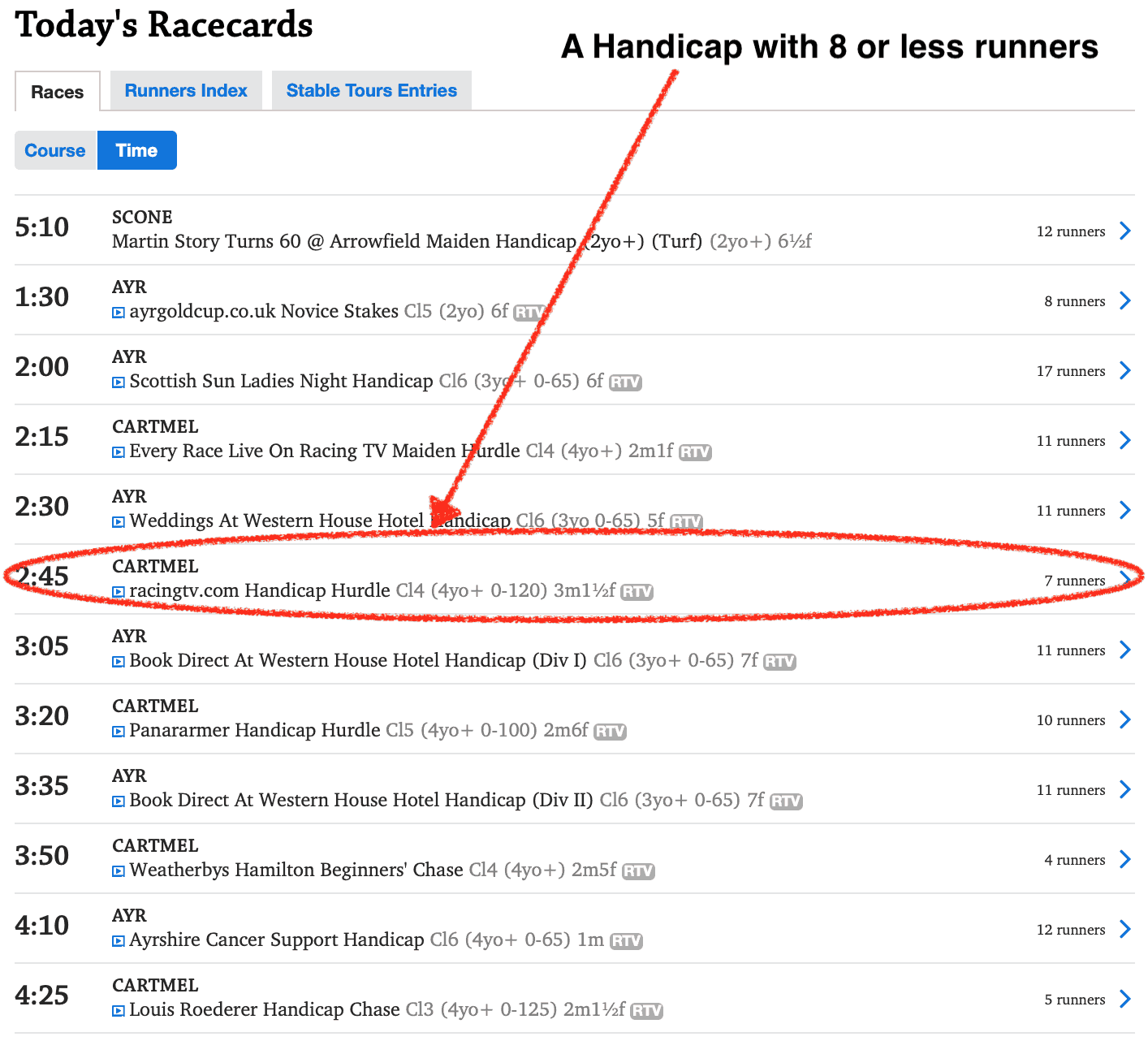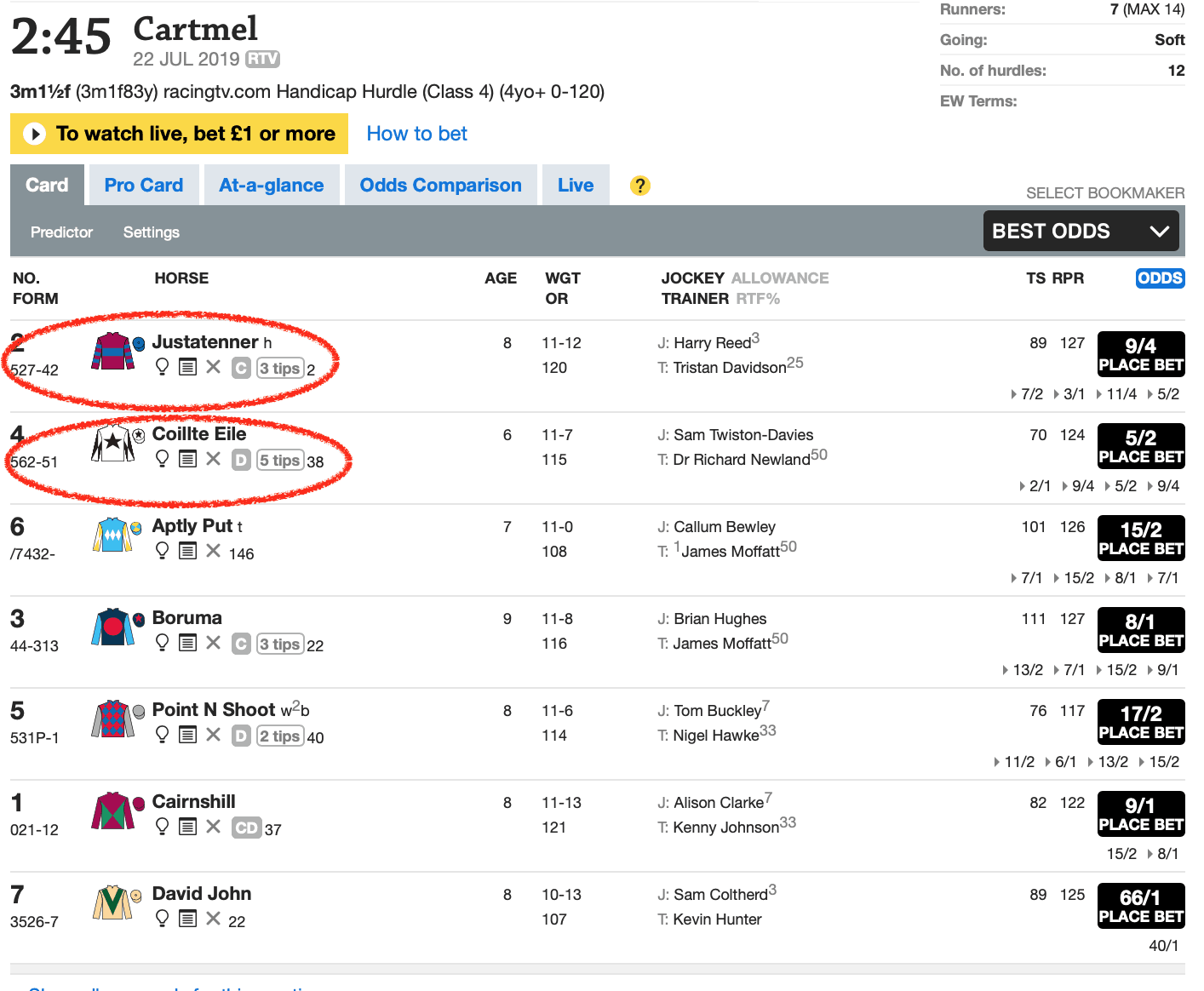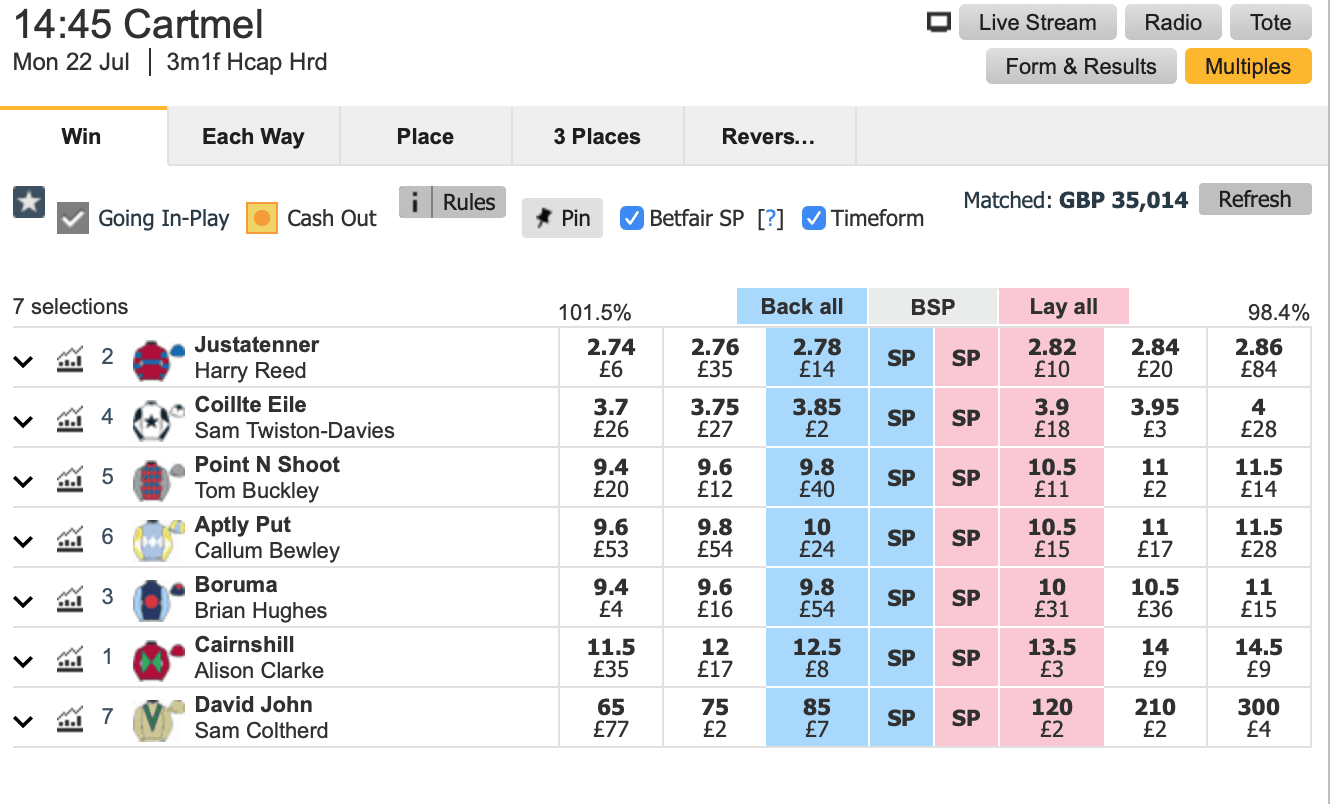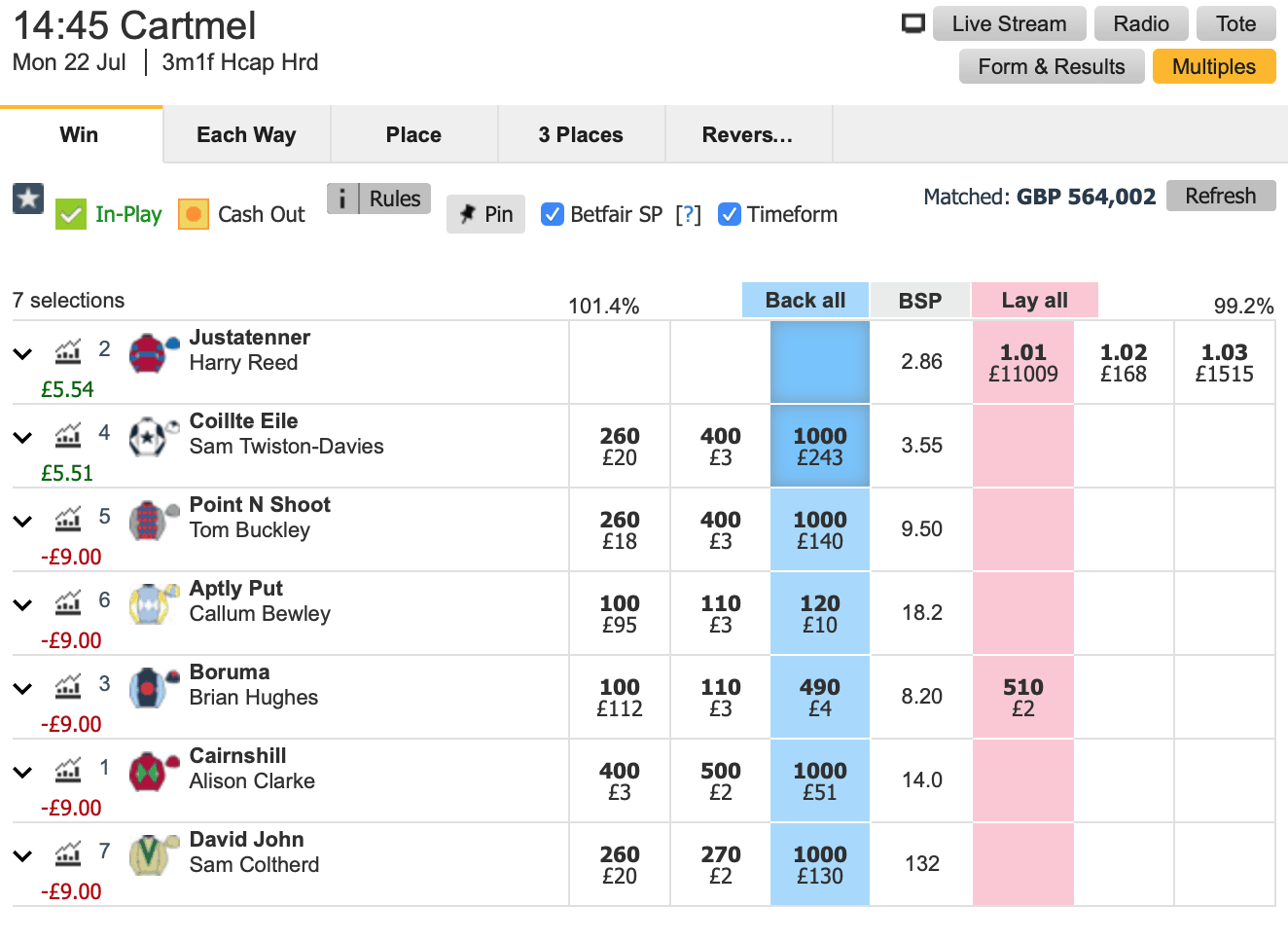Dutching Part V – The Final Piece And How It Works
Over the last four weeks, we've looked at how the percentages work with dutching, a quick and simple method as to how to find some qualifiers and bankroll management plus staking.
Here are the previous four articles, in case you missed them and you'll definitely need to read them for this article to make sense –
-
DUTCHING AND HOW THE PERCENTAGES WORK
-
DUTCHING PART II – HOW TO FIND QUICK AND EASY PROFITS
-
DUTCHING PART III – STAKING AND BANKROLL MANAGEMENT
-
DUTCHING PART IV – USING A CALCULATOR & BASIC TOOLS TO IMPROVE YOUR METHOD
So, as we come to the end of July and our series of Dutching articles, we now need to wrap up the whole thing and come to a conclusion.
Dutching works, if you understand the maths, understand the staking and understand the methodoligy of the whole process.
For this article, I'm going to cover a whole race, look at how I arrived at my selections and use the principles covered in the previous articles.
So, our selection criteria (this is where we start) is the following –
- We look for handicaps of 8 or fewer runners
- We exclude 2-year-old races
- We focus ONLY on the top two in the betting
- We look at the form and compare it to today's race
Looking at today's races (I'm writing this on Monday 22nd July) and bringing up the Racing Post's website, the first race that qualifies is –

From this qulaifying race, we click on the card and open up the race. We can see that –

Justatenner and Coillte Eile are the top two in the betting and they've been placed on their last outings. Again, this is a very simplistic way of dutching but for the purposes of this article, it will round things up nicely!
So, we've found a qualifying race, two qualifying horses now we need to work out our staking.
Using this calculator (you can download the losing run calculator here) we know that this strategy involves £9 stakes.
We now go to the exchanges (that's just out preferred place to bet) and look at the prices available, work out the perentages and look at what out stakes will be.
Here's a look at the exchange –

Justatenner and Coillte Eile are trading at 2.78 and 3.85, respectably.
So, its time for the maths.
Justatenner = 100/2.78 = 35.97
Coillte Eile = 100/3.85 = 25.97
Total = 61.94 Therefore 100/61.94 = 1.61 in odds for the combined selections.
We take our stake = £9 from our calculations above and divide this by the percentage chance of our two selections.
Therefore 9 divided by 61.94 = 0.1453
The figure 0.1453 is now multiplied by the percentage chance of each selection (I know it's a massive ball ache!! but once you've mastered this calculation, you'll be well on your way to making profits!)
So, 0.1453 multiplied by 35.97 (Justatenner's percentage chance of winning) = £5.23
0.1453 multiplied by 25.97 (Coillte Eile's percentage chance of winning) = £3.77
This now equals £9 for the two selections.

Once these bets have been placed, we can move onto the next race and repeat the process.
Here's the results of our Dutch bet –

Justatenner won the race for a profit of £5.54 before commission.
This is of course, an example and the methods used are very simplistic. However, it shows us how, using the correct maths and pronciples, we can implement a dutching strategy into our portfolios and consider a long term profit.
That's it for this series and we'll be back next month with a look at our next theme. This will be revealed in our emails, that will be sent out next week.
In the meantime, if you have any questions or need any assistance, simply add a comment below and we'll get back to you 🙂
Have a great week,

Eddie and the Football Advisor Team